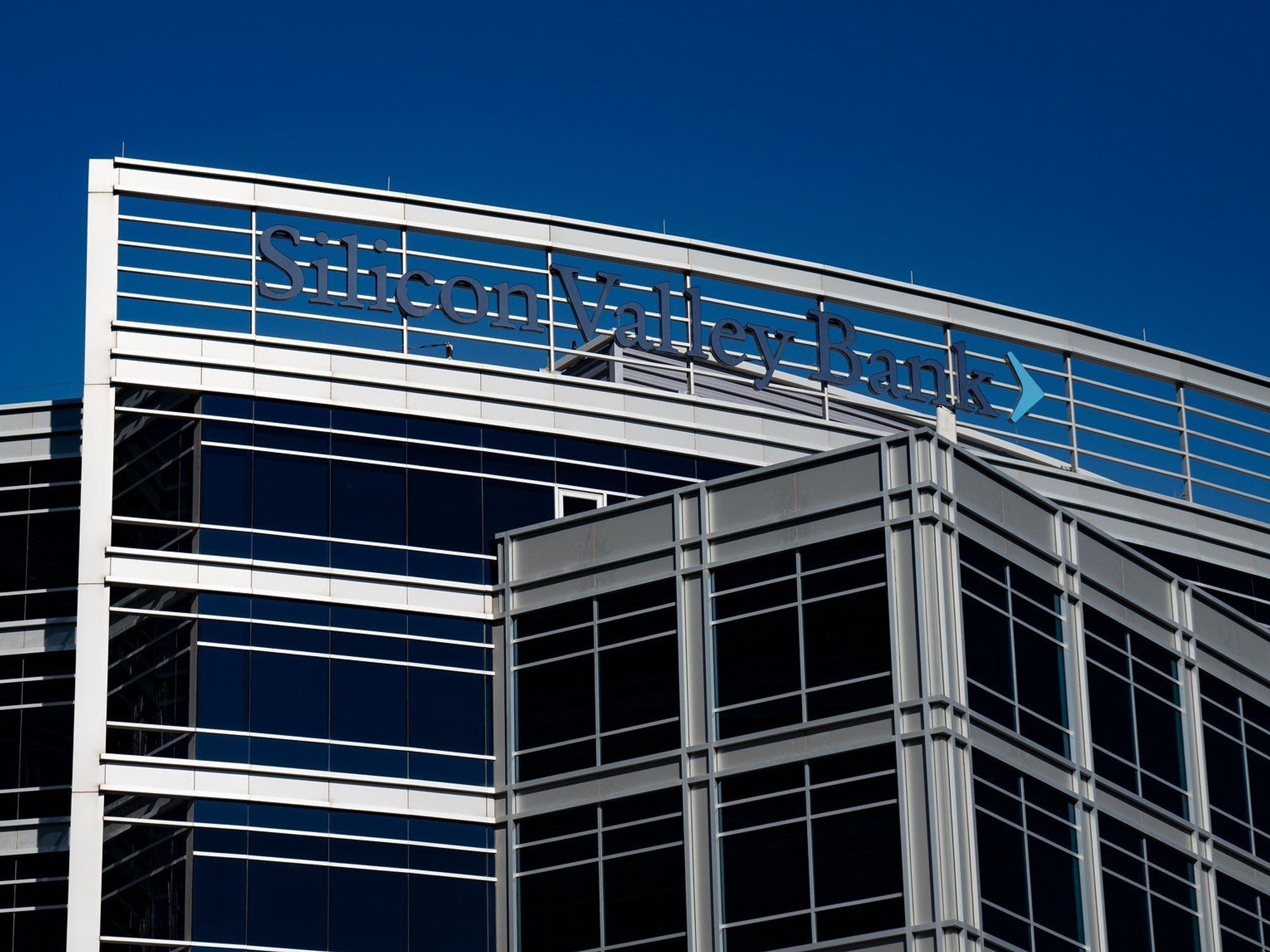The Prisoner’s Dilemma That Drove SVB’s VC Bank Run

Disclosure: SVB has been a sponsor of dot.LA events and recently had an article published on the site as part of a paid partnership agreement.
Regulators with the Federal Deposit Insurance Corp. (FDIC) have shut down Silicon Valley Bank (SVB) and taken control of its deposits, in what amounts to the largest US bank failure since the 2007-2008 global financial crisis.
What happened?
The situation spiraled out of control very quickly. On Wednesday, SVB made a surprise announcement that it would immediately seek new funds in order to shore up its finances, selling off $21 billion in liquid investments, organizing an emergency stock sale, and borrowing an additional $15 billion in new loans. By Friday morning, SVB executives had halted trading on all shares following a 60% stock plunge, and were publicly discussing a potential sale of the institution, while many technology investors and pundits worked overtime to quell fears and encourage calm.
There remains a great deal of uncertainty about what, specifically, happens next, just in terms of everyone’s money. The FDIC has said that insured depositors will get access to their funds no later than Monday morning, when SVB branches re-open under federal control. Still, that only guarantees $250,000 per depositor, per bank, and means a lot less for companies or customers with more funds in their accounts. They’ll be given certificates for their uninsured funds, which will hopefully be at least partially restored. SVB closed out 2022 with around $209 billion in total assets and $175.4 billion in deposits.
Will SVB’s collapse trigger another financial crisis?
SVB occupies a central role in the technology industry, and provides financing for nearly half of US venture-backed tech and health care companies. It’s possible, even likely, that the bank’s specialization triggered its downfall, and could insulate its considerable problems from triggering a wider economic crisis.
Other banks of similar size are more diversified in their investments, the thinking goes, making them less likely to topple now that SVB has collapsed. Wells Fargo analyst Mike Mayo called the SVB crisis “an idiosyncratic situation,” while British finance professor Jens Hagendorff told CNN that SVB’s situation is “special” and the wider global banking system “is in good shape and able to withstand significant shocks.” Nonetheless, shares in New York’s First Republic and Signature Bank were down more than 20% in Friday trading, indicating that there may be some fallout among smaller or less insulated institutions.
What went wrong in the first place?
There’s some consensus about what went wrong at Silicon Valley Bank that triggered the collapse. With interest rates on the rise in an effort to curb inflation, venture capital funding for the primary tech and health care companies served by SVB started to dry up, putting more and more pressure on the bank itself. When the bank announced plans to shore up its funding, and had its ratings downgraded by Moody’s, concern turned to panic, venture capitalists advised their portfolio companies to pull their funds, and the entire system collapsed.
In a fascinating Twitter thread, Activision Blizzard CCO Lulu Cheng Meservey suggests that the collapse primarily resulted from poor corporate communication around Wednesday’s announcement. She argues that SVB’s attempt to raise additional funds was a responsible decision, but the choice to make an announcement in a public press release without reassuring VCs and customers specifically about the overall strength of their business proved devastating. Even though their numbers and strategy for recovery was sound, Meservey argues, this wasn’t made clear to the people who needed to hear it most, thus creating a panic. (She also notes that SVB’s CEO told customers to “stay calm,” which is almost guaranteed to increase panic, not reassure people.)
Why did the collapse transpire so quickly?
If the SVB collapse was indeed a classic “bank run” (or “bank sprint,” as Seeking Alpha dubbed it), the fact that it operates specifically within the tech industry likely made the situation far worse. Most decision-makers in technology are on social media platforms like Twitter, where rumors (say, about banks on the verge of failing and being unable to cover their deposits) can spread extremely quickly and without important context (such as the institution’s overall financial health). In addition, a lot of stakeholders in the tech industry are watching the moves and listening to the advice of a few prominent and influential VCs; when they suggest it’s time to move your money around, a staggering number of founders and individual investors will listen and follow suit.
Writer Gergely Orosz laid this thinking out in a separate Twitter thread, noting that in some ways the SVB situation resembles a classic Prisoner’s Dilemma. If all SVB customers had remained calm and kept their funds in place for the time being, the bank would likely have been able to weather the storm. But for most individual stakeholders, there was little downside to pulling at least some of their funds from SVB, and a huge potential benefit. They could save money that would otherwise be frozen indefinitely or lost forever.
In the short-term, tech companies have already started finding new homes for their recovered cash. Financial tech startup Brex received billions in new deposits on Thursday, according to CNBC, while major banks like JPMorgan Chase, Morgan Stanley, and First Republic are also reporting heightened inflows. For now, it’s business as usual, but as we’ve just seen, these situations can progress rapidly and without warning.
- UCLA Economists 'Tear Up' 2020 Forecast and Revise GDP Down Due to COVID-19 ›
- 'They Gave Up Pretty Quickly': Learning from Quibi's Quick Collapse ›
- 'It Felt Like a Black Mirror Episode' The Inside Account of How Bird Laid off 406 People in Two Minutes via a Zoom Webinar ›
- Pasadena's Cheese Startup Is Focused on an Immigrant Community Distrustful of Banks ›
- SVB: What Startup Founders Could Expect From the Market in 2023 ›
- What the Collapse of SVB Means for These SoCal Companies - dot.LA ›
- SVB's Collapse Has Caused Confusion Among LA's Tech Scene - dot.LA ›
- Here Are the Culprits in the Silicon Valley Bank Mess - dot.LA ›



 Image Source: Valar Atomics
Image Source: Valar Atomics Image Source: Waymo
Image Source: Waymo Image Source: Apple
Image Source: Apple
